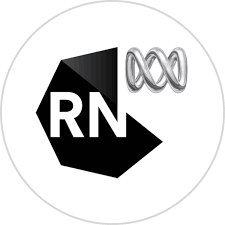
Justin McGee-Odger, Second Squared
“The two most powerful warriors are patience and time” – Leo Tolstoy
The Oxford dictionary defines patience as “the ability to stay calm and accept a delay or something annoying without complaining”. 2020 will go down in history for many things, but it’s unlikely to go down in history as a time of great patience.
Today, the global economy is on unstable ground, and short-term outlooks are uncertain and risky. That doesn’t mean the returns aren’t there. What is required is both patience and time.
Enter patient capital. In a special report by Oxford University Press’ Socio-Economic Review, patient capital is defined as capital that:
· is not divested under short-term turbulence in the market,
· facilitates manager decision making that has a long-term view, and
· provides investor returns that are attractive financially and fulfilling socioemotionally.
Importantly, patient capital investors like most warriors want to win, but they aim to combine both of Tolstoy’s warriors in one. Patience is needed to stay calm in the face of annoyance, and a longer time horizon for decision and value creation.
Patient capital is differentiated by three characteristics related to the timeline of the investment, the added value that hides behind the balance sheet, and its growing need in the marketplace.
Patient Capital Characteristic 1: Time and Intent
Investors who are patient are less focused on short-term pressures, and more focused on strategic application that favours resilience and sustainable long-term growth.
Listed shares and options are readily traded, and of recent times this has attracted investors focused on short-term share price returns. With them comes managers focused on shorter-term performance incentives which at times can harm longer-term growth.
Need we discuss last year’s banking royal commission? Many would argue that the performance incentives provided to bankers were an integral factor in the excessive and unwise lending to consumers.
A patient capital investor sees the risk of such greed and remains focused on the long term.
Wealth creation does not happen overnight, but it does happen with intention.
Patient Capital Characteristic 2: Relationship with the Executive
The relationship-based benefits between management and the investor are key drivers of value in a patient capital investment. Stanford Graduate Business School’s biannual report on search funds identifies this clearly (https://www.gsb.stanford.edu/faculty-research/case-studies/2020-search-fund-study-selected-observations).
Patient capital provides a rare win-win in the world of investing. A long-term investment from the get-go leaves the executive with the confidence to pursue a five year or longer plan to grow the business, potentially at the expense of short-term returns. The investor in turn receives the benefits of this strategy in the form of significant returns that match their timeline.
The support of a patient capital investor can also provide value-adds ranging from advice and networking to access to proprietary databases and professional relationships. The value added becomes robust as the investor’s and executive’s reach grows, reflecting a clear boost on the balance sheet.
Patient Capital Characteristic 3: Scarcity
The supply of patient capital is in decline.
Following the Global Financial Crisis, a report from World Economic Forum on the Future of Long-Term Investing indicates that there has been a clear shift to capital impatience (http://www3.weforum.org/docs/WEF_Future_of_Long_term_Investing.pdf).
Patient capital that traditionally came from large insurers and super funds is shifting to shorter-term investment vehicles as competition for the highest annual return grows.
Even alternative investments such as private equity that traditionally had outlooks spanning decades, have developed a reputation for brute force cost-cutting to generate returns on ever-shorter time horizons.
The report notes that family-managed assets and individual investors are offsetting the shift away from patient investments, but only by a small fraction.
The need for patience is stronger than ever.
Patient Capital Investors leverage patience and time to enable organisations to create value over the long term. These most powerful of warriors remain focussed on winning the war, not every battle. This is the Long Game. Over the course of the next three posts we look at it from the perspective of Investors, Entrepreneurs and a way to harness this powerful strategy.












